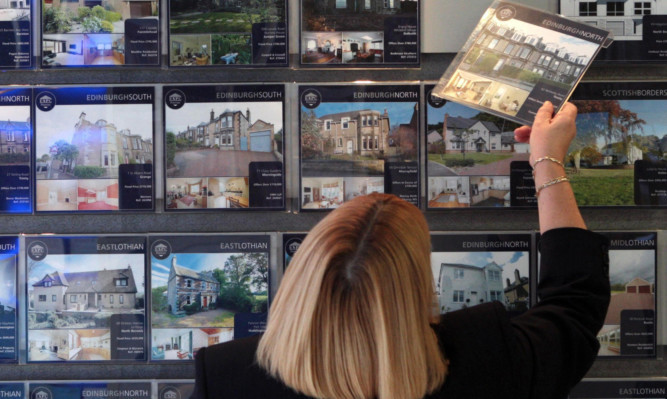Scottish Government forecasts for Scotland’s stamp duty replacement are based on “a more optimistic view” of property prices and transactions over the coming years, the chairman of the UK Government’s public finances watchdog has said.
Robert Chote of the Office for Budget Responsibility (OBR) was quizzed by Holyrood’s Finance Committee on discrepancies between his organisation’s predictions for Land and Buildings Transaction Tax (LBTT) revenues, and those of the SNP administration.
Mr Chote said that, comparing figures for 2020/21, the Government’s draft budget predicts LBTT will be around £35 million higher than the OBR’s own forecast.
The Government’s forecast for residential sales is about £70 million higher, while it is around £36 million lower for non-residential sales.
“On the residential front, I think the difference is explained by three factors,” Mr Chote told the committee.
“First the Scottish Government is assuming slightly more rapid increases in house prices over this period.
“On the transactions, the Scottish Government have a 15% increase in transactions between 2020/21 and 2015/16, we have about 9%.”
Differences in modelling could also be factor, Mr Chote said.
He added: “I would not regard the difference between the two as being large, in comparison to the uncertainty that lies around either of the forecasts in isolation.”
Conservative MSP Gavin Brown also highlighted discrepancies between OBR and Government forecasts for 2016/17, in which the former predicts a tax take of £253 million for residential property transactions, and the latter forecasts £295 million.
Mr Chote said the difference could be down to different starting data, which is “pushed through” into the rest of the forecast.
The forecasting differences come after property experts called for a review of the tax – brought in to replace stamp duty in April – claiming the higher end of the housing market was stalling as a result.
The Scottish Fiscal Commission submitted figures to the committee which estimated revenues of between £203.9 million and £243.9 million for 2015/16, once the effect of forestalling – people bringing transactions forward to avoid the new tax – was taken into account.
The commission’s figures were lower than the Government’s own forecast for the same period, which placed revenues at £235 million, and did not include forestalling.
Prof Campbell Leith, from the Scottish Fiscal Commission, told MSPs in November: “The out-turn data is significantly below what you would expect given the seasonality you would normally expect in the data.
“This may be because of a temporary forestalling effect or it may be that the change in the tax regime has permanently subdued certain parts of the market and this will continue indefinitely.”
